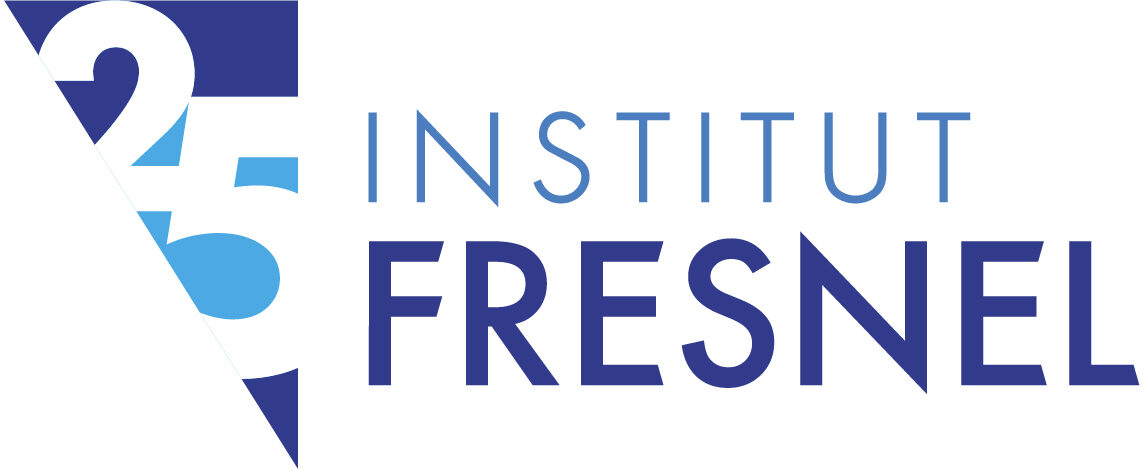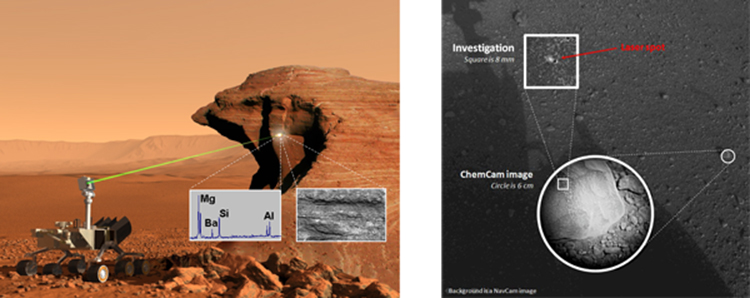
Introduction
Laser induced damage in nonlinear optical crystals is often a limitation for the design of compact and high power laser systems. Frequency converters and Pockels cells both make use of the same type of crystalline materials. We mainly work with KTP [1-4], RPT [4-6] and LBO [7] but are also implied in work with KDP and DKDP [8-10]. Applications of these nonlinear optical materials are manifold : KTP, LBO, KDP and DKDP are typical frequency conversion crystals that are usually pumped by nanosecond lasers. RTP and KDP are usually applied for electro-optical switches like Pockels cells. Larger projects using these crystals are for example the Mars Science Laboratory rover and the inertial confinement fusion class lasers (NIF, LMJ, …).
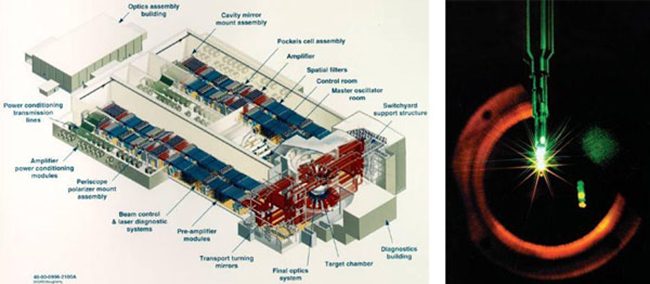
Metrology
Laser damage testing of nonlinear optical crystals is more demanding than testing isotropic materials. An essential condition to obtain meaningful data is to specify propagation direction and polarization direction of the laser light in the crystal coordinate system. Depending on the divergence of the test beam, the position of the focal point and the amount of birefringence between the concerned axes, the focusing aberration will change the beam profile in the crystal (see illustration). In general, nonlinear optical crystals are small and expensive samples. This means that one will try to get a precise probability curve from a small crystal surface. To minimize the surface used for a certain probability measurement, the size of the test beam and the spacing of the test sites have to be optimized. As damage probability measurements are often used as relative measurements, the knowledge of the error bars (or confidence intervals) for the fluence axis [11] and the probability axis [12] is necessary to make meaningful comparisons between the different test conditions. Last but not least, as for other materials, the damage probability measurements are influenced by the number of sites that are tested for each wavelength, the diameter of the test beam, the test mode, the wavelength, the pulse duration. One thus needs to be careful to compare only comparable measurements.
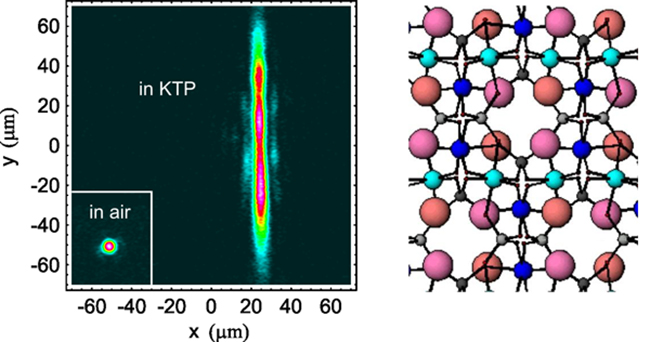
Physics of the damage initiation process
Especially concerning KTP and RTP, a large database of fully comparable measurements has been obtained during a PhD-thesis from 2005-2008 [13]. All these measurements have been performed using Quantel Ultra GRM lasers with longitudinal multi-mode operation.
The important observations from these measurements are the following :
The laser damage threshold for z-polarized light is higher than for x-y polarized light. This holds true for 1064 nm and 532 nm measurements in KTP (and RTP), as well as for 1064 nm, 532 nm and 355 nm measurements in LBO. [4,6,7]
The laser damage threshold does not depend on the direction of propagation as long as no phase matching condition for the generation of shorter wavelength light is fulfilled (KTP and RTP). [4,6,7] If unwanted or wanted frequency conversion to 532 nm is observed, the laser damage threshold strongly depends on the fluence ratio of both wavelengths (KTP and RTP). [2,6]
The laser damage threshold depends neither on small absorption changes (factor of 2) nor on large changes in the ionic conductivity (factor of 1’000). (RTP [5])
The observed damage threshold decrease when using multiple pulses on each test site (fatigue effect) is strong at 1064 nm but weakens and disappears when testing at shorter wavelengths (KTP and LBO) [2,4,7]. Additionally, the fatigue effect observed at 1064 nm wavelength can be described by a statistical model without supposing cumulative material modifications [1] and this even if a longitudinal mono-mode laser is used. (For details see this page ).
All these observations can be understood in the framework of a physical model published recently [3]. The damage initiation process is composed of two successive steps (see schematic below). The first step, multi photon ionization with successive color center formation, is more easily driven by 532 nm light. The second step, conduction band electron heating is more efficiently driven by 1064 nm light.
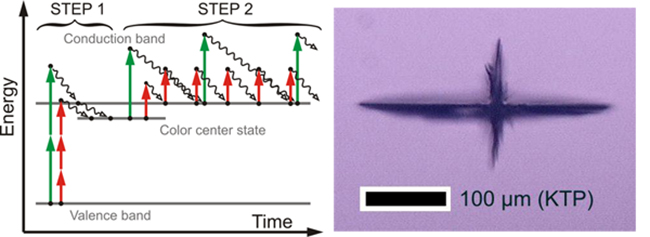
One consequence of this mechanism is the strong cooperativity between 1064 nm light and 532 nm light. In fact, the presence of only a small intensity of 532 nm light in addition to the 1064 nm light decreases the damage threshold by a factor of 2 [2,6]. The creation of the color centers seems to be independent of the crystal quality for the used experimental conditions and the color centers themselves are not stable and do not accumulate from one pulse to the next for small pulse repetition rates of 10 Hz or less. On can think of them as light-induced transient damage precursors.
